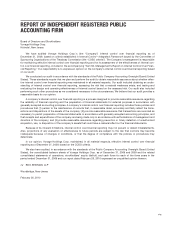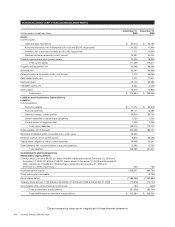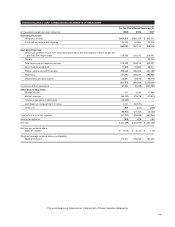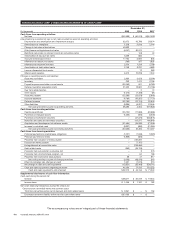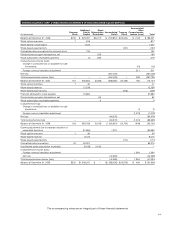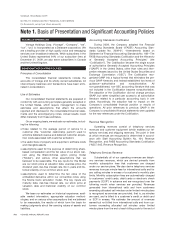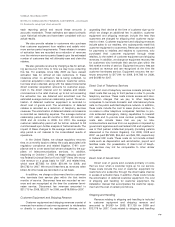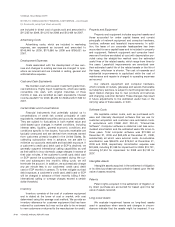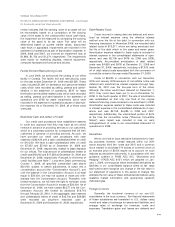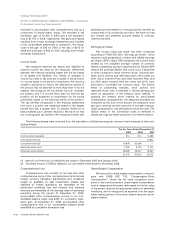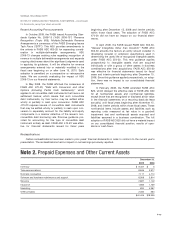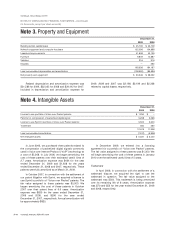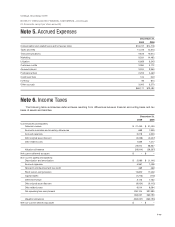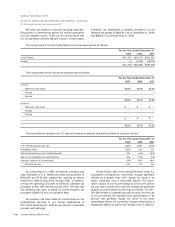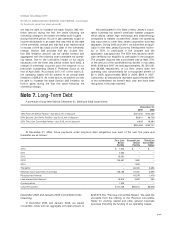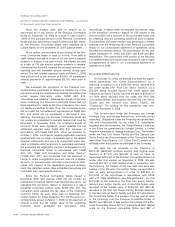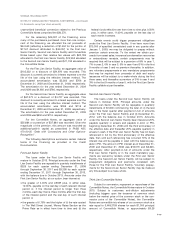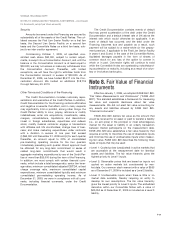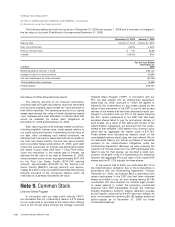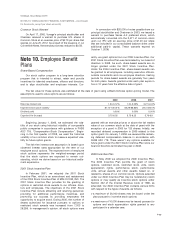Vonage 2009 Annual Report Download - page 73
Download and view the complete annual report
Please find page 73 of the 2009 Vonage annual report below. You can navigate through the pages in the report by either clicking on the pages listed below, or by using the keyword search tool below to find specific information within the annual report.
VONAGE HOLDINGS CORP.
NOTES TO CONSOLIDATED FINANCIAL STATEMENTS—(Continued)
(In thousands, except per share amounts)
Recent Accounting Pronouncements
In October 2009, the FASB issued Accounting Stan-
dards Update No. 2009-13 (“ASU 2009-13”) “Revenue
Recognition (Topic 605), Multiple-Deliverable Revenue
Arrangements a consensus of the FASB Emerging Issues
Task Force (“EITF”). This ASU provides amendments to
the criteria in FASB ASC 605-25 for separating consid-
eration in multiple-deliverable arrangements. ASU
2009-13 changes existing rules regarding recognition of
revenue in multiple deliverable arrangements and expands
ongoing disclosures about the significant judgments used
in applying its guidance. It will be effective for revenue
arrangements entered into or materially modified in the
fiscal year beginning on or after June 15, 2010. Early
adoption is permitted on a prospective or retrospective
basis. We are currently evaluating the impact of ASU
2009-13 on our financial statements.
In May 2008, the FASB affirmed the consensus of
FASB ASC 470-20, “Debt with Conversion and other
Options (Including Partial Cash Settlement),” which
applies to all convertible debt instruments that have a net
settlement feature; which means that such convertible
debt instruments, by their terms, may be settled either
wholly or partially in cash upon conversion. FASB ASC
470-20 requires issuers of convertible debt instruments
that may be settled wholly or partially in cash upon con-
version to separately account for the liability and equity
components in a manner reflective of the issuer’s non-
convertible debt borrowing rate. Previous guidance pro-
vided for accounting for this type of convertible debt
instrument entirely as debt. FASB ASC 470-20 was effec-
tive for financial statements issued for fiscal years
beginning after December 15, 2008 and interim periods
within those fiscal years. The adoption of FASB ASC
470-20 did not have an impact on our financial state-
ments.
In April 2008, the FASB issued FASB ASC 350-30,
“General Intangibles Other than Goodwill.”FASB ASC
350-30 amends the factors an entity should consider in
developing renewal or extension assumptions used in
determining the useful life of recognized intangible assets
under FASB ASC 350-30. This new guidance applies
prospectively to intangible assets that are acquired
individually or with a group of other assets in business
combinations after their acquisitions. FASB ASC 350-30
was effective for financial statements issued for fiscal
years and interim periods beginning after December 15,
2008. Since this guidance applied prospectively, on adop-
tion, there was no impact to our consolidated financial
statements.
In February 2008, the FASB amended FASB ASC
820, which delayed the effective date of FASB ASC 820
for all nonfinancial assets and nonfinancial liabilities,
except those that are recognized or disclosed at fair value
in the financial statements on a recurring basis (at least
annually), until fiscal years beginning after November 15,
2008, and interim periods within those fiscal years. These
nonfinancial items include assets and liabilities such as
reporting units measured at fair value in a goodwill
impairment test and nonfinancial assets acquired and
liabilities assumed in a business combination. The full
adoption of FASB ASC 820 did not have a material impact
on our consolidated financial position, results of oper-
ations or cash flows.
Reclassifications
Certain reclassifications have been made to prior years’ financial statements in order to conform to the current year’s
presentation. The reclassifications had no impact on net earnings previously reported.
Note 2. Prepaid Expenses and Other Current Assets
December 31,
2009 2008
Inventory $ 9,457 $ 5
Telecommunications 8,845 2,977
Nontrade receivables 7,117 4,710
Software and hardware maintenance and support 6,958 2,814
Services 2,887 1,149
Insurance 1,885 1,739
Marketing 894 4,367
Other prepaids 2,382 564
$40,425 $18,325
F-13


